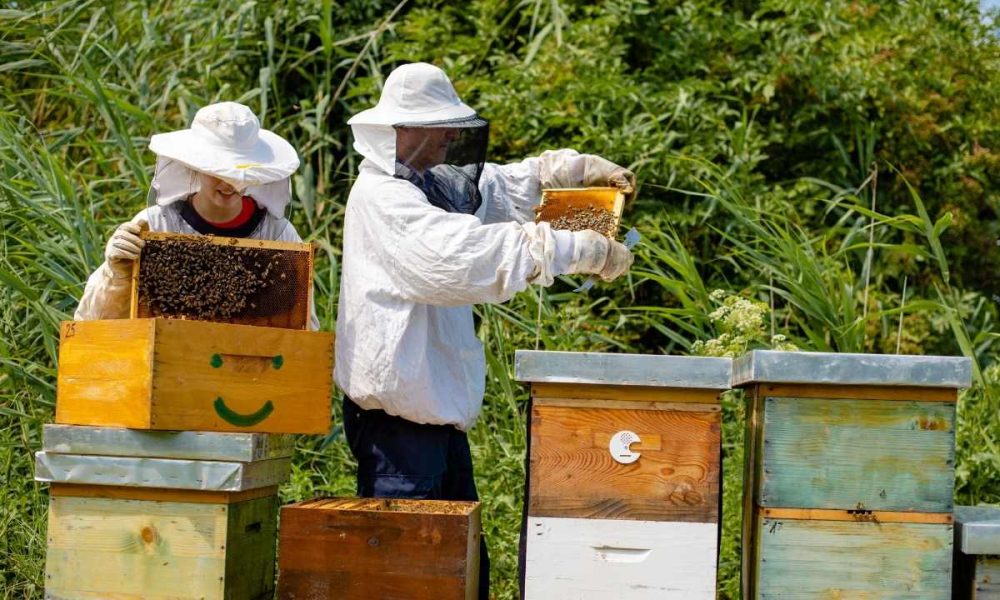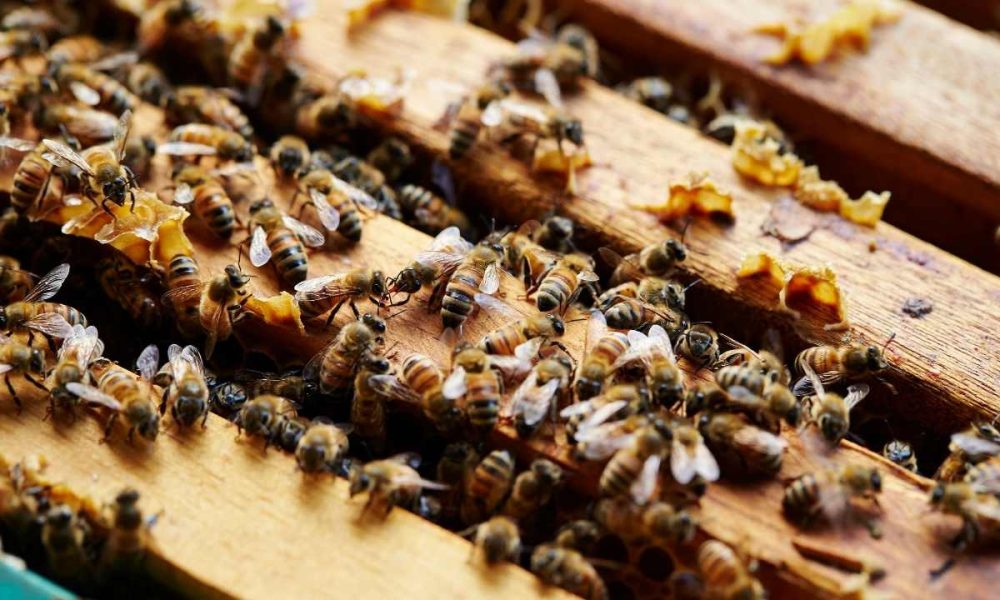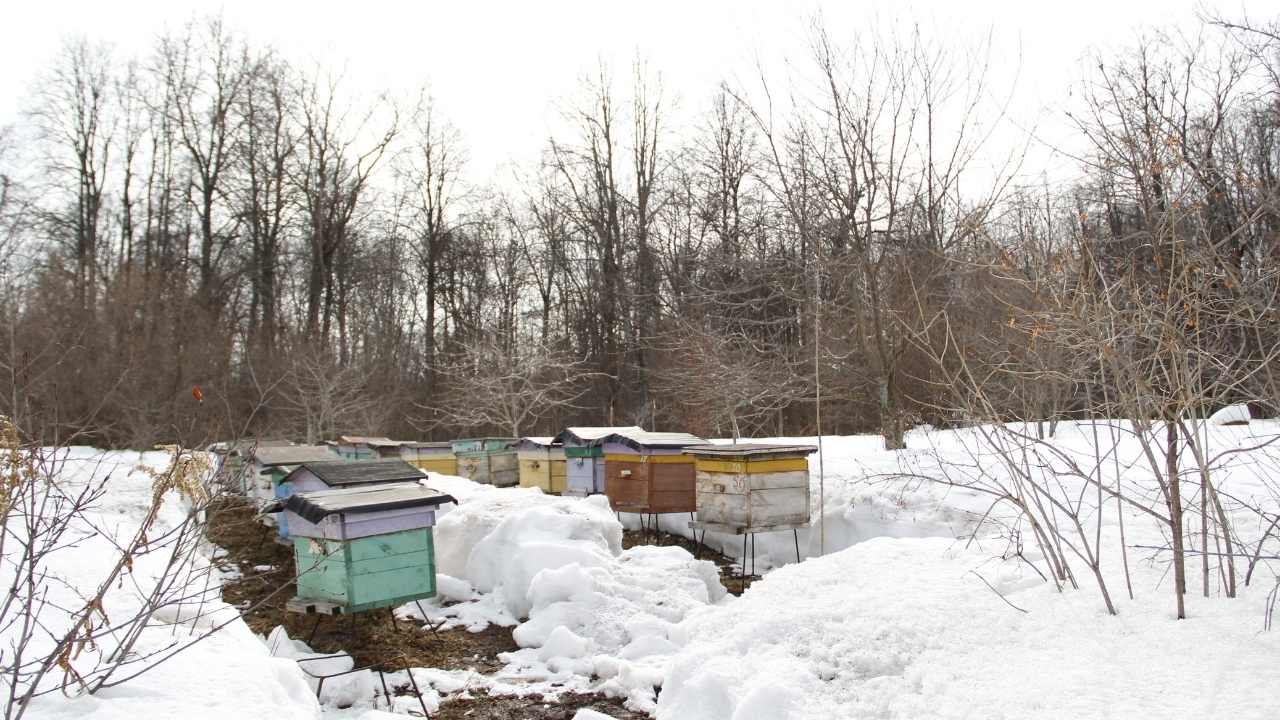
You may have heard of Langstroth’s legacy in beekeeping, but do you truly understand the inner workings of hive ventilation and hive stand setup? These two elements are crucial to maintaining a healthy hive and ensuring that your bees thrive. But how did Langstroth revolutionize these aspects of beekeeping, and why are they so important?
There is a theory that honeybees are capable of regulating their own temperature within the hive, but this is only partially true. While bees can generate heat through their activity and cluster together to keep warm during colder months, proper ventilation is still necessary to prevent excess moisture buildup and ensure fresh air flow. Without adequate ventilation, your bees could become stressed or even sick, leading to a weakened colony. This is where Langstroth’s contributions come in – he designed hives with movable frames that allowed for improved air circulation and easier management by beekeepers. By understanding the importance of proper ventilation and implementing it in his designs, Langstroth set the foundation for modern beekeeping practices.
The Importance of Hive Ventilation
Proper hive ventilation is crucial for the health and productivity of your bees. Hive ventilation refers to the process of allowing air to circulate inside the hive, which helps regulate temperature, humidity, and air quality. Without proper ventilation, your bees may experience a range of issues such as overheating, moisture buildup, mold growth, and respiratory problems.
To ensure adequate hive ventilation, it’s important to choose a location that offers good air circulation. Avoid placing hives in areas with stagnant or polluted air such as near highways or industrial sites. Additionally, you can improve airflow by using screened bottom boards or adding ventilation holes on the sides of your hives. Proper hive ventilation not only benefits your bees but also promotes honey production and reduces stress levels among colonies.
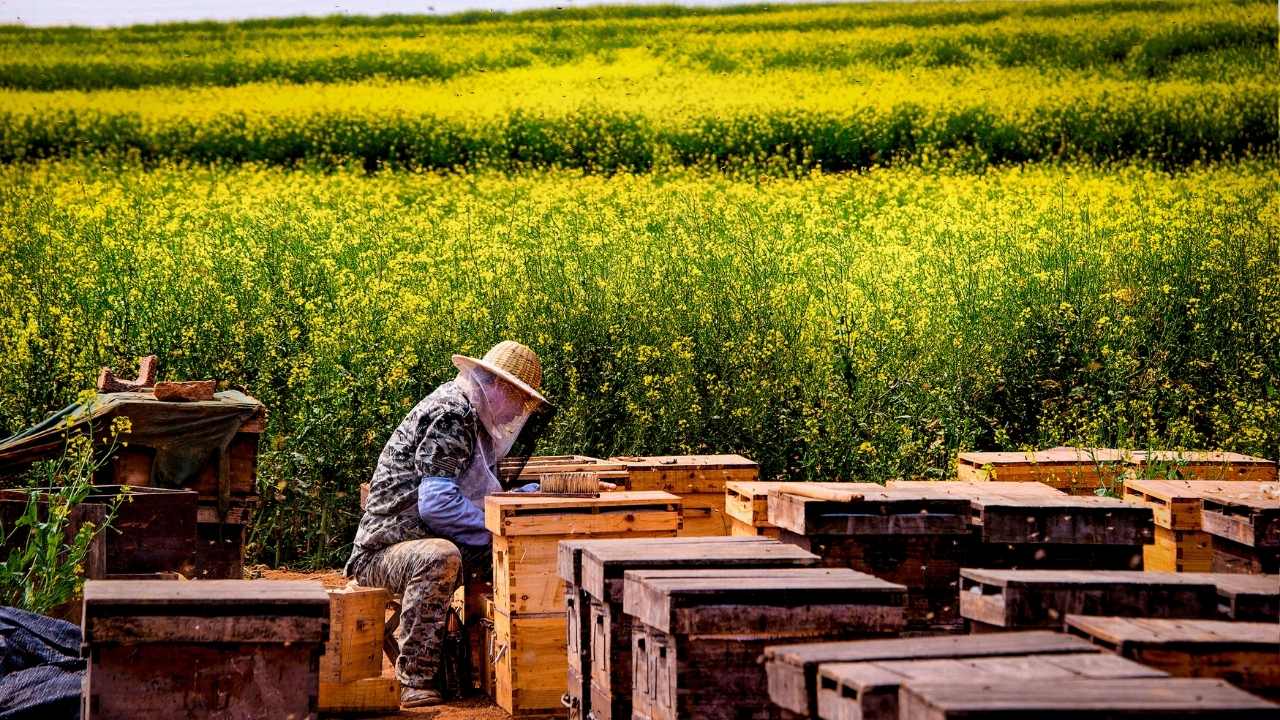
Understanding hive stand setup is another essential aspect of beekeeping that impacts the overall health and productivity of your bees.
Understanding Hive Stand Setup
To keep your bees healthy and productive, you’ll want to make sure they have enough space to enter and exit the hive easily, which can be achieved by using a well-designed stand that takes into account their natural behaviors. Here are some things to consider when setting up your hive stand:
- Stability concerns: Make sure the stand is level and sturdy enough to support the weight of the hive, especially during strong winds or rain.
- Material options: Cedar wood is a popular choice for its durability and resistance to rotting, but there are also other options such as metal or plastic stands available on the market.
- Height: The ideal height for a hive stand is around 12-18 inches off the ground, allowing for easy access for both bees and beekeepers.
- Spacing: Leave enough room between each hive on the stand so that bees can fly in and out without disturbing neighboring colonies.
Understanding how to set up a proper hive stand will not only provide your bees with an optimal living environment but also make it easier for you as a beekeeper to manage your hives effectively. Now let’s move onto Langstroth’s contributions to hive ventilation.
Langstroth’s Contributions to Hive Ventilation
The optimization of the hive environment was greatly improved with Langstroth’s beekeeping innovations. One of his most significant contributions was in the area of hive ventilation. He recognized that proper air flow management was essential to maintaining a healthy colony, and he designed hives with this in mind.
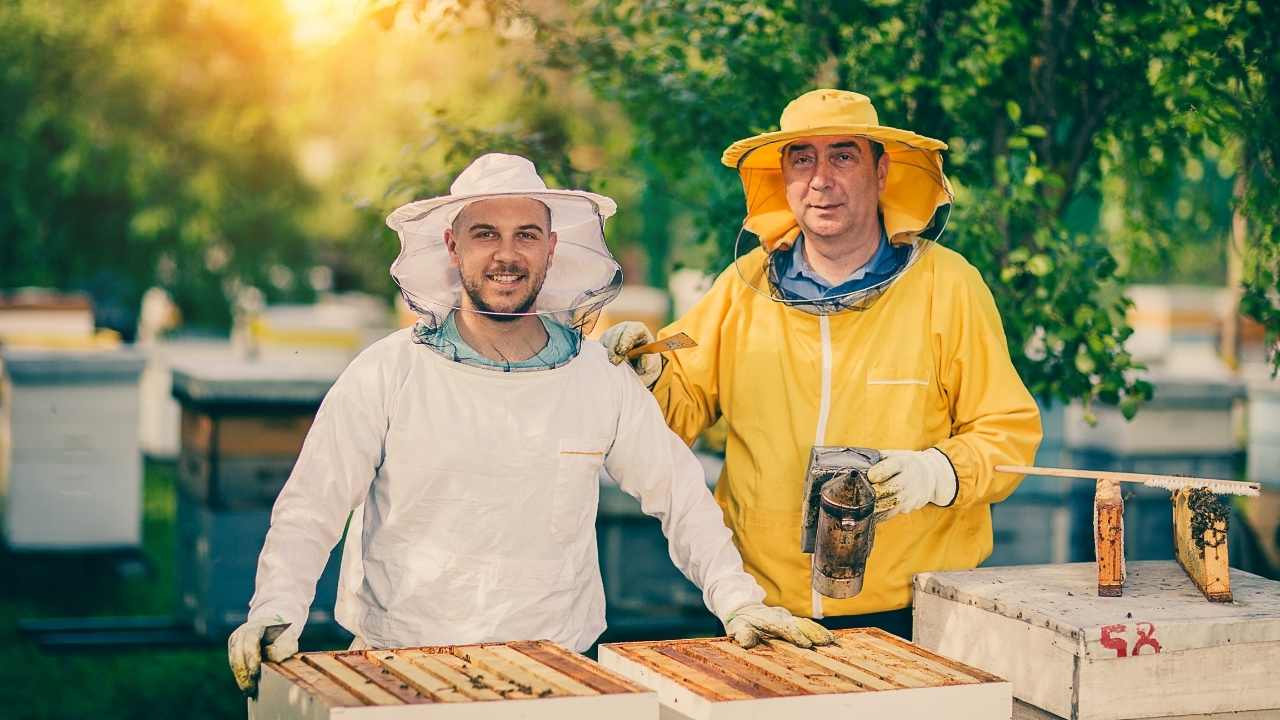
Langstroth’s hive design allowed for ample ventilation without compromising the structural integrity of the hive. His patented removable frame system enabled beekeepers to easily inspect and manipulate their hives, which was critical for managing bee populations and ensuring proper airflow. By understanding the importance of proper ventilation, Langstroth revolutionized beekeeping practices and paved the way for modern honey production techniques. With such advancements in hive ventilation, it is no wonder that Langstroth also made significant strides in improving hive stand setup, which we will discuss further in the next section.
Langstroth’s Contributions to Hive Stand Setup
You’re about to discover how Langstroth changed beekeeping forever with his innovative approach to setting up the perfect stand for your hive, making it easier than ever before to manage your colony and increase honey production. Thanks to his beekeeping innovations, hive maintenance techniques have become simpler and more efficient. Here are a few ways Langstroth revolutionized hive stand setup:
- He introduced the concept of using removable frames in hives, which allowed beekeepers to inspect their colonies without disturbing them too much.
- Langstroth also designed hives with bottom boards that provided proper ventilation and drainage for the bees. This ensured that they had access to fresh air and kept their living space dry and clean.
- He advocated for placing hives on stands at least 12 inches above the ground. This not only helped keep predators at bay but also prevented moisture from seeping into the hive.
- Finally, Langstroth recommended leaving enough space between hives so that each colony had enough room to grow without interfering with its neighbors.
With these simple yet effective techniques, beekeepers today can maintain healthy colonies while enjoying higher honey yields. Now let’s explore some tips on maintaining a healthy hive without compromising its productivity.
Maintaining a Healthy Hive
Maintaining a healthy colony is crucial for beekeepers who want to maximize honey production and ensure the long-term survival of their bees. One of the most important aspects of hive maintenance is maintaining hive hygiene. This involves regularly cleaning out old comb, removing dead bees, and ensuring that there are no excess moisture or food sources that could attract pests.
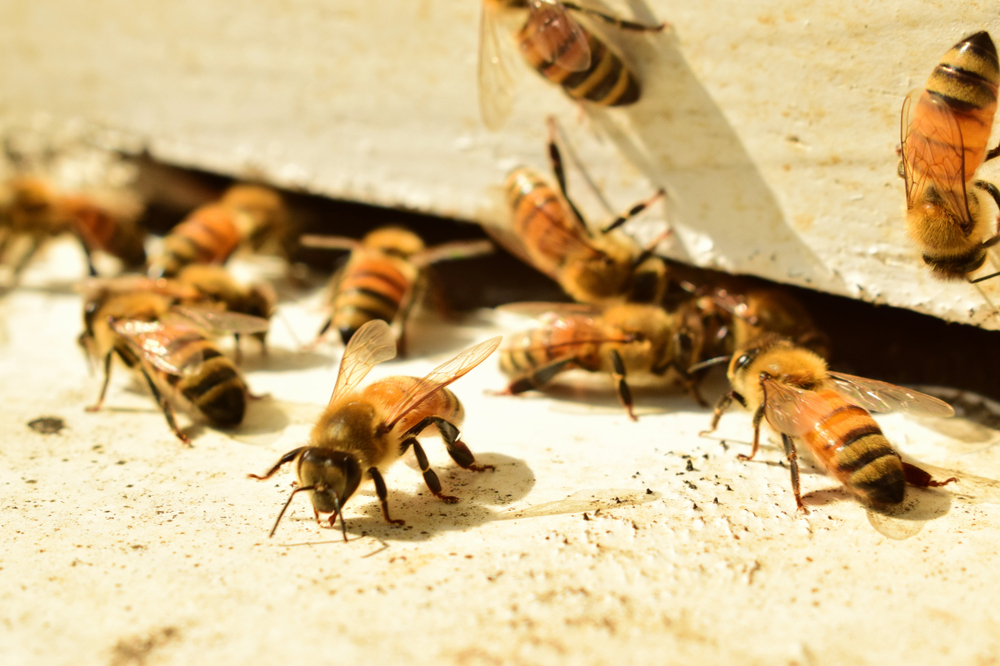
In addition to maintaining proper hygiene, pest management is also essential for keeping your hive healthy. Pests such as Varroa mites and wax moths can quickly take over a colony if left unchecked, so it’s important to keep an eye on your hive and take action at the first sign of infestation. This may involve using natural methods such as screen bottom boards or chemical treatments, depending on your personal preferences and beliefs about beekeeping practices. By prioritizing hive hygiene and pest management, you can help ensure the health and longevity of your colony for years to come.
As you wrap up your understanding of Langstroth’s contributions to modern beekeeping practices, it’s clear that his legacy lives on in many ways. From his innovative design for hives with movable frames to his emphasis on proper ventilation and stand setup, Langstroth’s ideas have helped shape the way we care for bees today. By incorporating these principles into our own beekeeping practices, we can continue to honor his legacy while also contributing to a healthy global ecosystem.
Conclusion: The Enduring Legacy of Langstroth’s Contributions to Beekeeping
As a beekeeper, incorporating the principles of proper hive hygiene and pest management into your practices is essential for ensuring the health and survival of your beloved bees. However, it’s important to remember that there are other factors that contribute to the well-being of your hives. Langstroth’s legacy has taught us about the importance of hive ventilation and hive stand setup.
When it comes to ventilation, adequate airflow allows for excess moisture to escape, reducing the risk of mold growth and disease. Hive stands also play an important role in honeybee conservation by elevating hives off the ground, protecting them from pests such as ants and allowing for better air circulation. By taking these simple yet impactful steps inspired by Langstroth’s contributions, you can help maintain healthy hives and ensure their longevity for years to come.
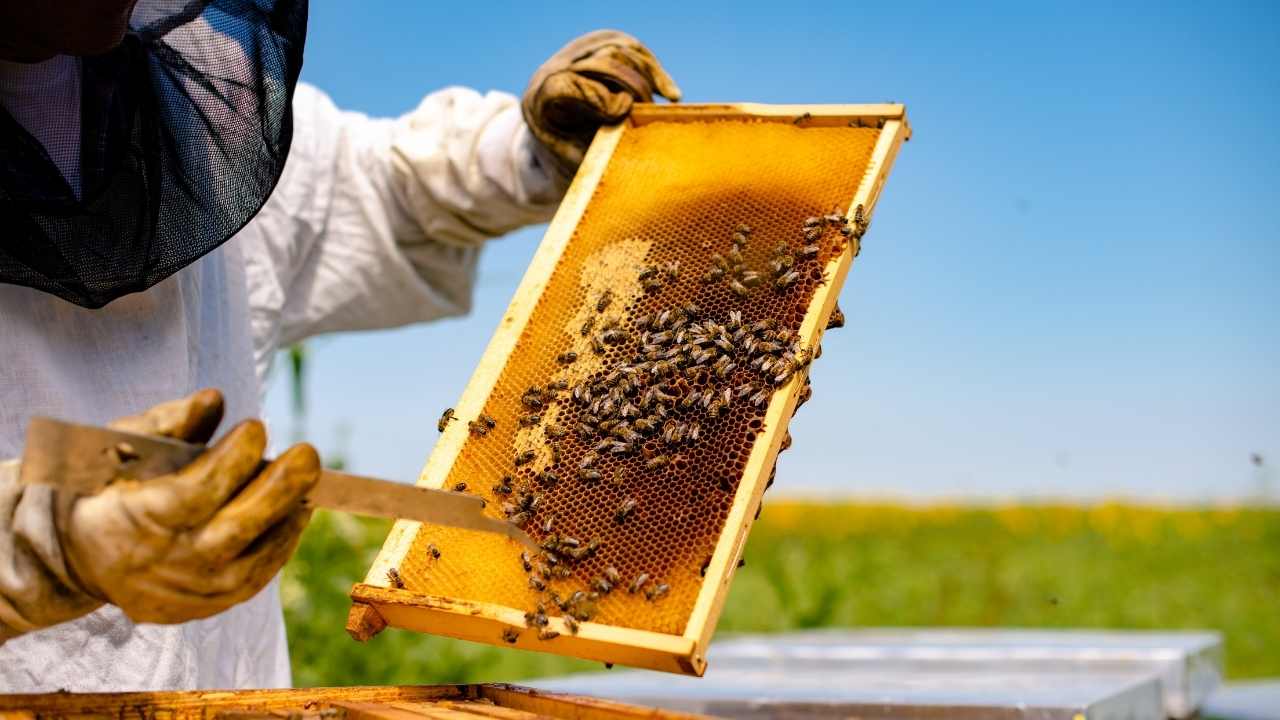
Frequently Asked Questions
How long does it take for bees to adjust to a new hive stand setup?
When it comes to changing up your hive stand setup, bee behavior can be unpredictable. While some colonies may adjust quite quickly to a new location or stand, others may take longer to adapt. Factors such as hive stand stability and the season can also play a role in how well your bees adapt to change. However, with patience and attentive observation of your bees’ behavior, you can help them acclimate to their new surroundings over time. It’s important not to rush the process and give your bees the time they need to feel comfortable in their new home. Remember that every colony is unique, and what works for one may not work for another. So keep an eye on things and make adjustments as needed until you find the optimal setup for your particular group of busy bees!
Can hive ventilation be improved by simply adding more entrances or does it require a more complex system?
Improving hive ventilation is crucial to maintaining a healthy hive and sustaining your bees. One way to enhance airflow is by adding multiple entrances, which allows for better circulation and reduces the risk of overheating. However, it’s important to ensure that your hive stand is stable enough to support these added entrances without compromising its integrity. Additionally, a more complex system like an airflow system can also be implemented for optimal ventilation control. It’s essential to keep in mind that proper ventilation not only benefits the bees but also aids in pest control and overall colony health.
What is the ideal temperature range for a beehive and how can it be maintained?
Maintaining the ideal temperature range for a beehive is essential to keeping your bees healthy and productive. Tips for maintaining temperature include providing adequate ventilation, shading the hive on hot days, and insulating the hive during cold weather. Beehive insulation has its pros and cons – while it can help regulate the internal temperature of the hive, it may also trap moisture inside. To ensure that your bees are comfortable and thriving, regularly check the temperature inside the hive using a thermometer or thermal imaging camera. With some patience and attention to detail, you can successfully maintain a healthy environment for your bees to thrive in.
Are there any natural remedies for preventing or treating common hive diseases?
If you’re a beekeeper, you know that hive diseases can be a major issue. While there are many conventional treatments available, some beekeepers prefer to use natural remedies instead. There are several natural remedies that have been shown to be effective in preventing and treating common hive diseases. For example, essential oils like tea tree oil and thyme oil have antimicrobial properties that can help keep your hives healthy. However, it’s important to note that alternative treatments may have drawbacks as well. They may not be as effective as conventional treatments or they may require more time and effort on your part. Ultimately, the choice of whether to use natural or conventional treatments is up to you.
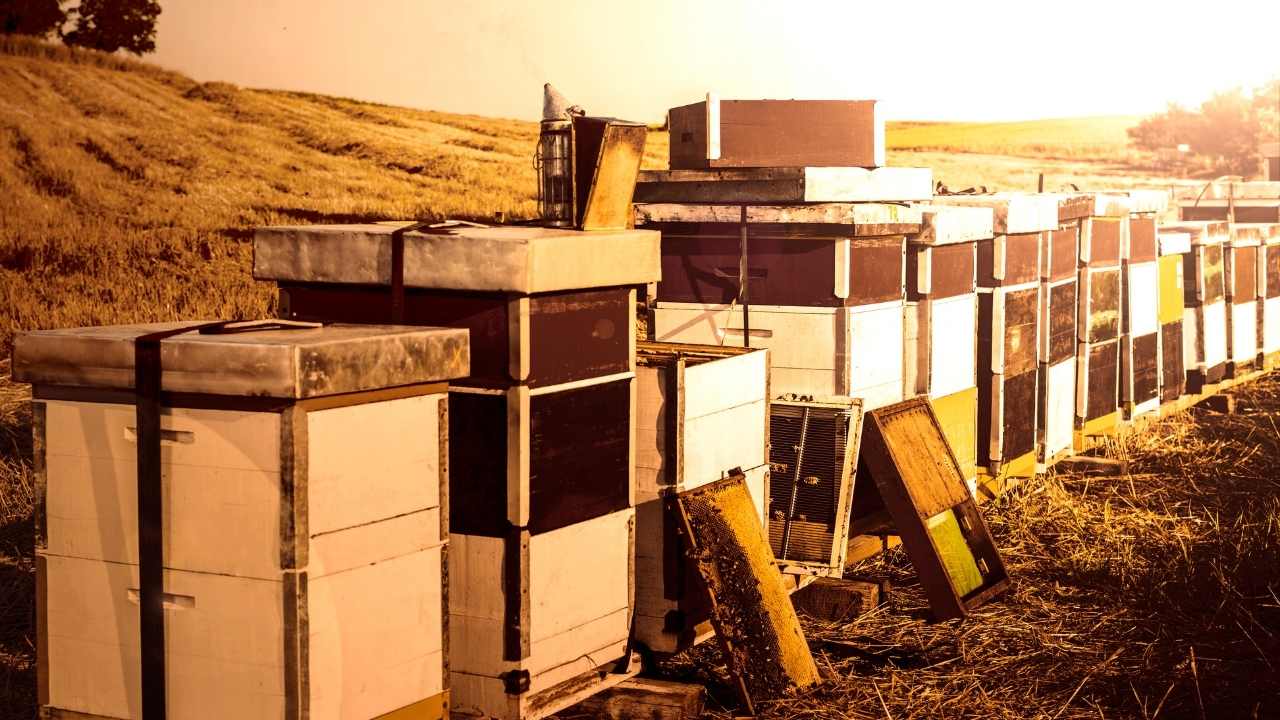
How has the design of beehives changed since Langstroth’s time and what new innovations are being developed?
Beehive innovations have come a long way since Langstroth’s time. With advancements in technology and materials, beekeepers now have access to more efficient and effective hive designs. One new innovation is the Flow Hive, which allows honey to be harvested without disturbing the bees. Another innovation is the Top Bar Hive, which mimics the natural shape of a honeycomb for better colony health. As a beekeeper, it’s important to stay up-to-date on these innovations to provide the best possible care for your bees and ensure their survival.
Conclusion
Congratulations! You now know the inner workings of hive ventilation and hive stand setup. You have gained a deeper appreciation for Langstroth’s contributions to beekeeping, which have stood the test of time.
Langstroth’s legacy lives on through his innovative ideas that have revolutionized beekeeping. His dedication to understanding the needs of bees has led us to develop methods to maintain healthy hives, ensuring that they thrive and produce honey for years to come. Just as a skilled musician knows how each note contributes to a beautiful melody, you now understand how proper hive ventilation and stand setup contribute to the health and well-being of your buzzing friends.
As you continue on your journey as a beekeeper, remember the importance of maintaining a healthy hive. Be patient, attentive, and knowledgeable in your approach. With Langstroth’s legacy guiding you, you can ensure that your bees will flourish under your care.


Roger Thomas is a seasoned beekeeper and hive architect with a deep-seated passion for sustainable living. His fascination with bees has shaped his professional career, giving him practical and theoretical expertise in bee behavior, colony health, and optimal hive conditions. Roger’s technical skills shine in his bespoke hive creations that cater to the specific needs of diverse bee species, while his sustainable practices promote environmental balance and the wellbeing of the bee population.
As he continues his journey in beekeeping, Roger has become a dedicated advocate for responsible practices and an insightful educator in his field. His posts aim to inspire new beekeepers, underline the importance of sustainability, and showcase the remarkable contribution bees make to our ecosystem. Roger invites you to join him as he delves into the world of bees and the rewarding, honey-sweet art of beekeeping.

